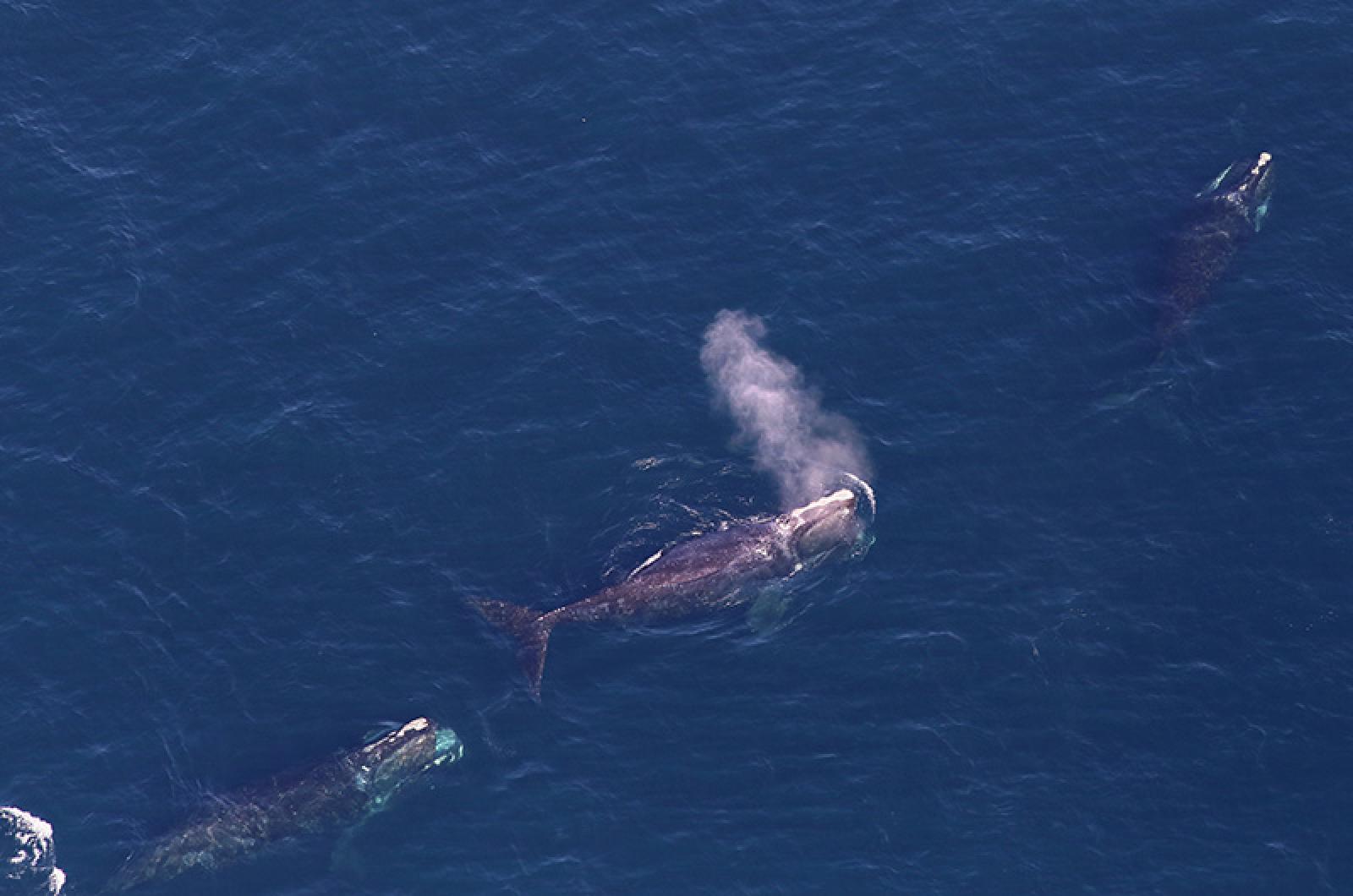The sudden reappearance of a whale long driven from Vineyard waters might seem like a win for nature, but those studying the return note that the phenomenon may be an indicator of more struggles for the species—and also a key opportunity to learn more about how whales are affected by offshore wind projects.
According to a recent study from the New England Aquarium, the North Atlantic right whale—one of the world’s most critically endangered species—has staged a return to its centuries-old Southern New England habitat, which hasn’t seen a significant right whale presence since the late 17th century.
The study compiles six years’ worth of right whale population data collected during aerial surveys that span from Block Island east past Nantucket and 40 to 50 miles south of Martha’s Vineyard. Reviewing the metrics on whale sightings, study lead author Orla O’Brien said that her team knew they needed a “statistically sound” analysis of population changes.
“It definitely felt like there were more whales in the survey area, and more right whales [specifically],” Ms. O’Brien said. “Doing the abundance estimation and then doing the trend estimation was a really rigorous way to put our biases aside about what we thought might happen and see what it actually was.”
The results of the study has confirmed researchers’ early suspicions: Right whales are indeed returning to the waters of southern New England’s shallow coastal shelf.
The North Atlantic right whale was first driven out of New England waters during the early years of the colonial whaling boom of the 17th and 18th centuries, which decimated the local populations of right and sperm whales. Now even as the right whale has begun to repatriate its old habitats, frequent ship strikes and deadly entanglements in fishing gear have made it difficult for the animal to maintain a stable population.
The New England Aquarium study found that the year-on-year abundance of right whales in the winter and spring increased, on average, from 2013 to 2019. Early evidence also suggests that the return of the right whale may be year-round.
“We also saw this new use of the area in summer and fall,” Ms. O’Brien said.
The data is sparse, however, relying on a small handful of detections that were inconsistent across the six years of the survey effort.
“We didn’t have enough data for a trend estimation there,” she said.
Ms. O’Brien told the Gazette that while this return of right whale populations may appear hopeful to Island locals, it more accurately reflects a species that is struggling to find its place in an ocean ecosystem wracked by climate change.
“A lot of times whales go to their calving grounds in the wintertime, which is off of Florida and Georgia. But their food resources are shifting and they have to spend more time looking for food,” Ms. O’Brien said. “The increased abundance that we’ve seen in the past 10 years or so…I think it’s just part of this larger picture of the fact that right whales are shifting their distribution.” Ms. O’Brien added that if the right whales are indeed feeding in the coastal shelf waters, then “at least you know they’re feeding somewhere.”
Even small affirmations like this are important for a species whose populations is estimated at below 350 individuals with “fewer than 100 breeding females,” according to the National Oceanographic and Atmospheric Administration.
The study also confirms that construction for Vineyard Wind overlaps with reemerging right whale habitat. In 2019, an agreement between Vineyard Wind and a number of national conservation groups confirmed a number of turbine construction and operation standards designed to reduce the impact of the project on right whales.
These standards included reduced construction in the winter and spring, whale monitoring during construction periods, and noise dampening protocols.
“The project’s construction schedule accounts for these anticipated changes as the year-round presence of the whales in the area is included in the permitting analysis,” a representative of Vineyard Wind told the Gazette in a statement. “The same data used in this paper was used in the environmental analysis for the wind project permitting.”
Ms. O’Brien said that with years of data on right whale populations in hand, continuing to monitor populations during construction of the wind farm could give scientists a real-time window into how construction effects endangered whales—a topic that’s not fully understood.
“There are wind farms in Europe, for instance, but those wind farms mostly just overlap with animals such as harbor porpoise and harbor seals,” Ms. O’Brien said. She emphasized that it is “really important that we continue to survey as these turbines are constructed and as they’re operating because we can detect changes in [right whale] abundance.”
Vineyard Wind echoed Ms. O’Brien.
“The collection of data during and after the project construction will continue to contribute to important science on this critical and important species,” their statement read.







Comments (1)
Comments
Comment policy »